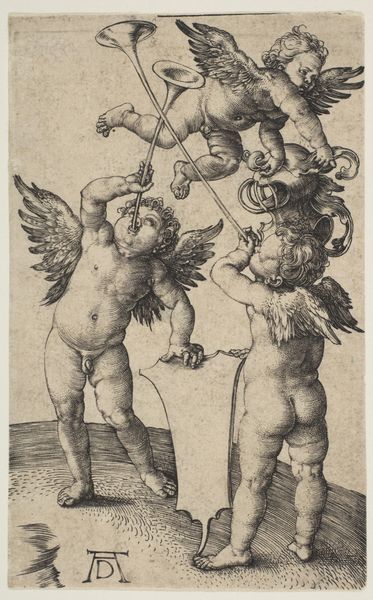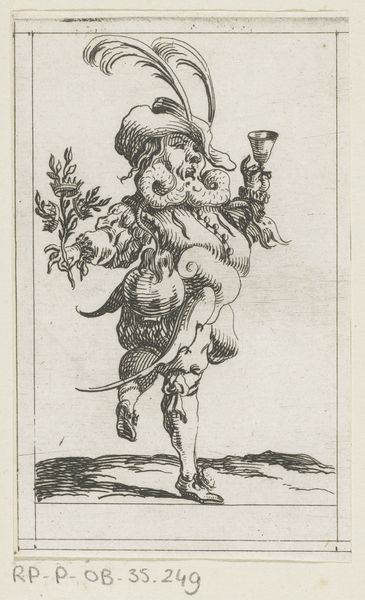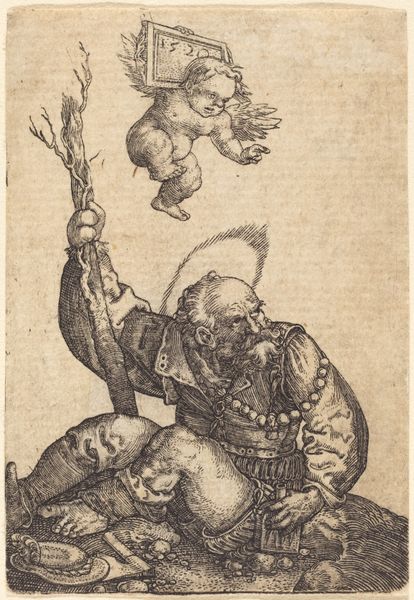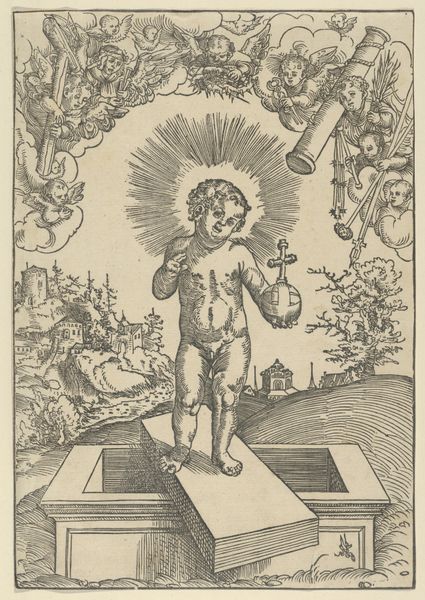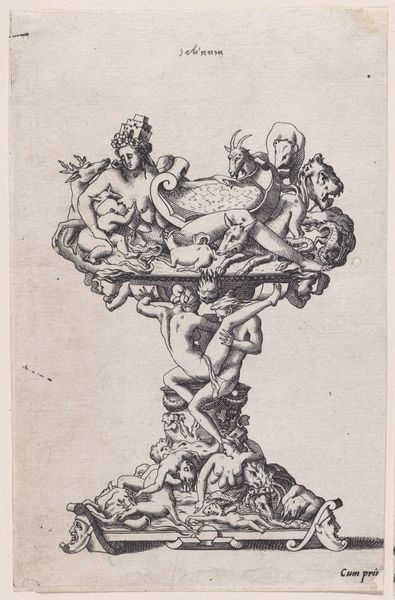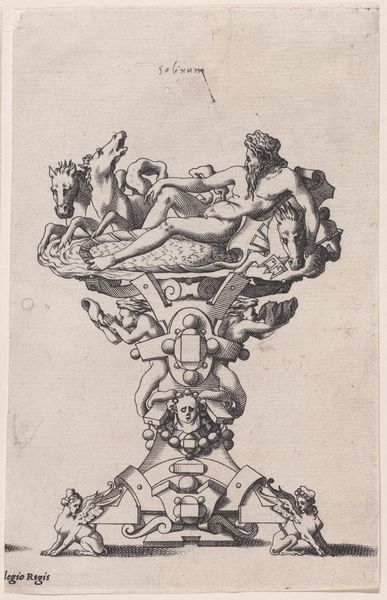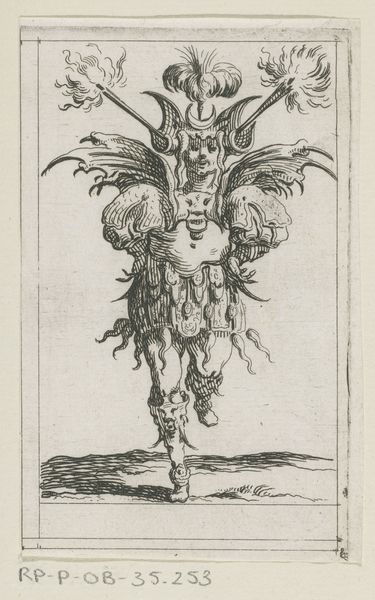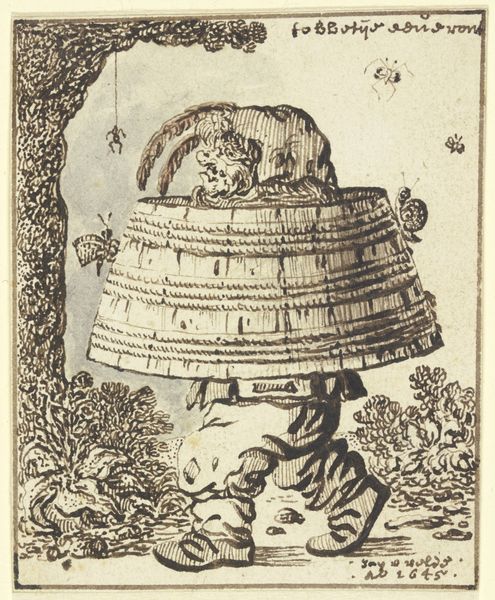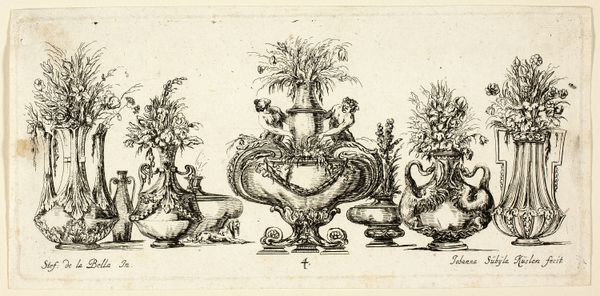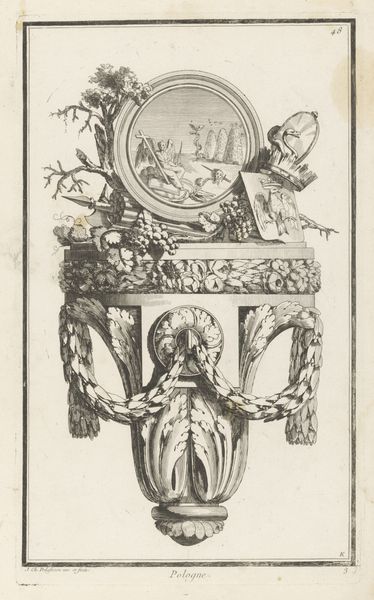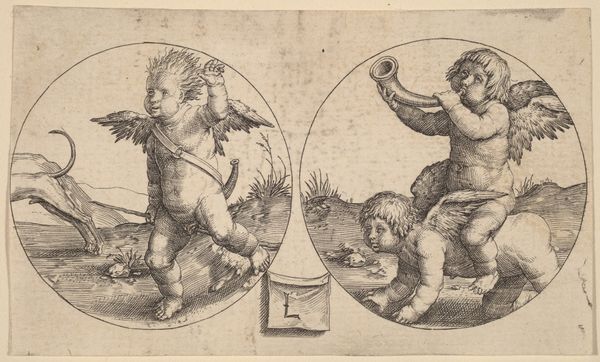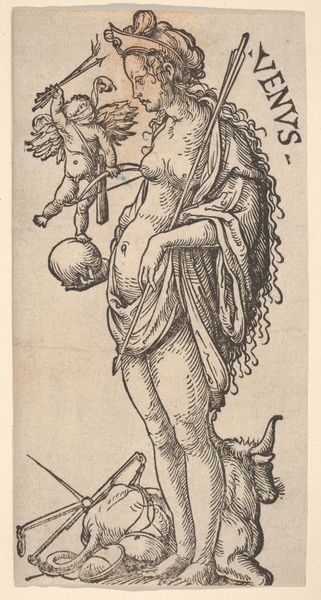
drawing, print, engraving
#
drawing
#
allegory
# print
#
figuration
#
11_renaissance
#
northern-renaissance
#
engraving
Copyright: Public Domain
Editor: So, this is "The Great Column (bottom block)," an engraving by Albrecht Dürer from 1517. It's fascinating how these cherubic figures are carrying what looks like an enormous sphere. What symbolic weight do you think Dürer was trying to convey here? Curator: Notice how these putti, typically symbols of innocence and divine love, are rendered with considerable strain. This tension between their cherubic form and the apparent weight they bear is central to its symbolic reading. Consider also that Dürer was working during a time of massive social upheaval – the Reformation. Do you see any reflections of that? Editor: I see what you mean! The tension gives the image a very different feeling, less carefree than you'd expect from cherubs. Reformation… Maybe the weight symbolizes the burden of the Church or established traditions? Curator: Precisely. Think of the column as a foundational element, representative of societal structures or beliefs. These young, winged figures straining under its weight could represent a society burdened by expectation or dogma. Does the flowing water between them remind you of anything? Editor: Water... perhaps purification, or even the wellspring of new ideas challenging the old order? Curator: Possibly both. Water is rife with symbolic possibility. Consider how Dürer has depicted it—controlled, directed. Might this represent attempts to manage the inevitable change and reformation afoot? What about the beholder’s place in this? Editor: It’s definitely something to think about! I never would have considered the Reformation's impact here without your perspective. The symbolic weight of it is intense, especially since the forms appear joyful at first glance! Curator: Indeed. Dürer was a master of imbuing images with multiple layers of meaning. Considering the cultural memory embedded in these symbols allows us a richer understanding not only of the artwork but also of the period itself.
Comments
No comments
Be the first to comment and join the conversation on the ultimate creative platform.
